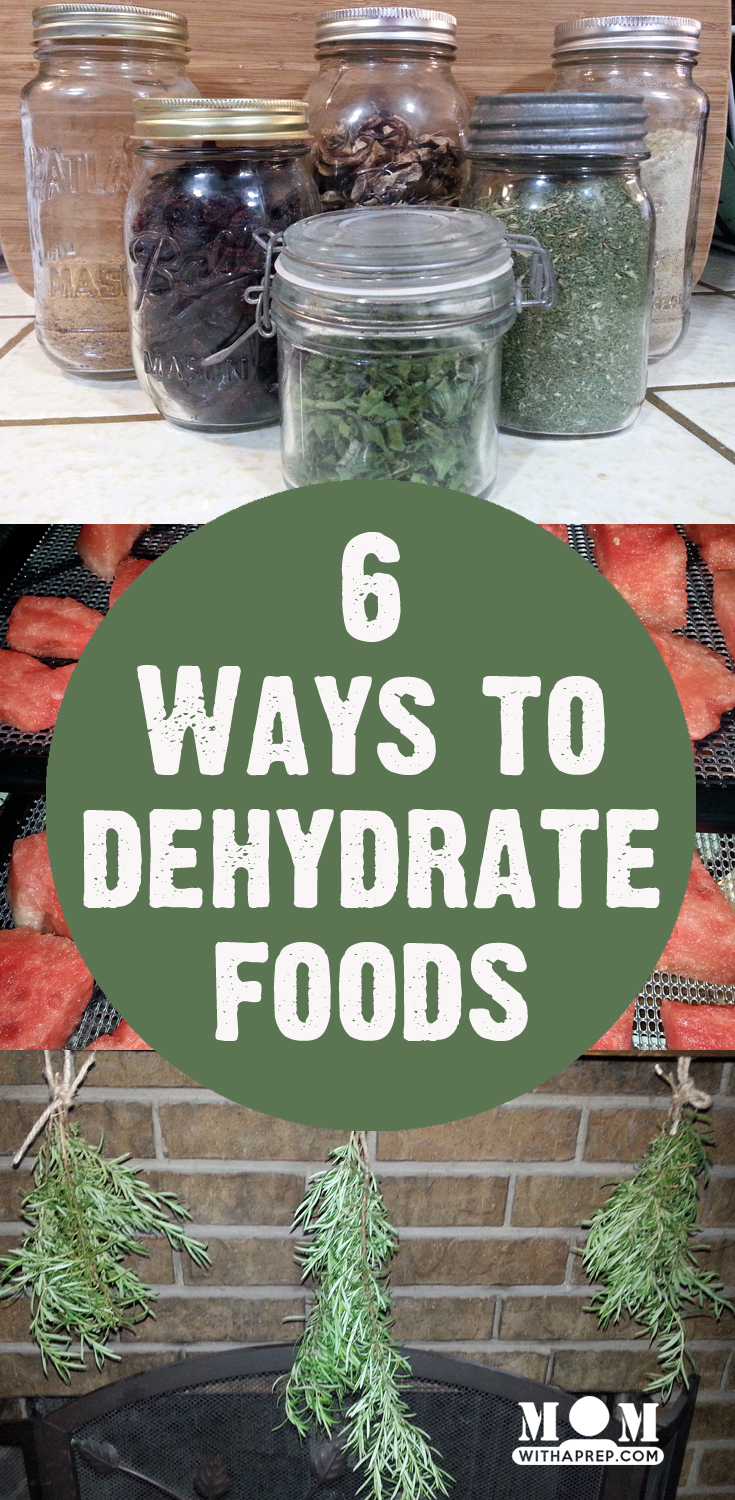Think using an electric dehydrator is the only way to be able to dehydrate your garden bounty? You’ve got options!
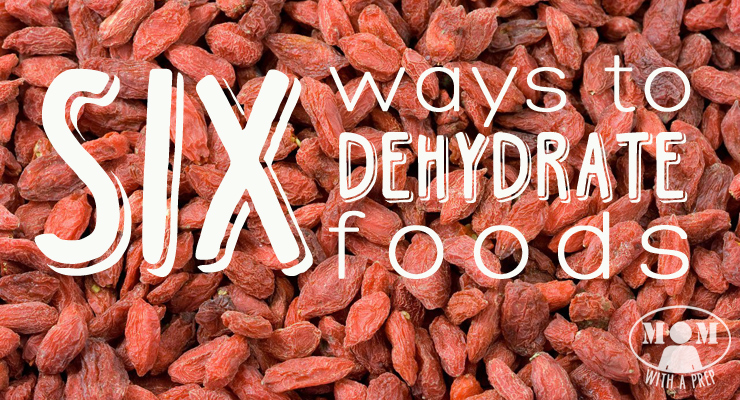
Dehydrating food is a great way to be able to preserve your garden bounty or great find at the produce stand. You simply remove the moisture from your produce or meat to give it a much longer shelf life. This is not the same thing as freeze-drying which is a more mechanical process. This is simply allowing nature or low heat to dry out food.
Dehydrating takes up less space than traditional canning if canning is not something you want to tackle. It’s also much less hands-on than canning, simply prepare your slices, and walk away, then store (through canning jars with silica packets, zip top bags for quick use, dry canning or using a vacuum sealer) to keep your bounty fresh, but dry, until you are ready to use it in your cooking or snacking. Dehydrated foods typically can last up to a year or more, though meat jerky should be consumed within 3 months.
SIX METHODS TO DEHYDRATE FOOD
Off-Grid Drying Racks
This method allows you to use natural dehydration to dehydrate your food without artificial heat. Having the mesh on the sides helps keep bugs and unwanted matter away from your food, you’re not reliant on an energy source other than the wind and sun, but you are dependent on perfect weather for it. Non-humid sunny days work best. These are easy (and inexpensive) to build with some scrap wood and window screening. This method is slower, but not being on the grid has it’s benefits, too!
Solar Powered Dehydrator
Electrical Dehydrator
 Electric dehydrators are probably the most convenient in that you can just throw stuff in and walk away. You don’t have to worry about the weather or bugs or making sure all the conditions are prime. But you are dependent on some kind of power to run them. They are also the most reliable means of dehydrating safely.
Electric dehydrators are probably the most convenient in that you can just throw stuff in and walk away. You don’t have to worry about the weather or bugs or making sure all the conditions are prime. But you are dependent on some kind of power to run them. They are also the most reliable means of dehydrating safely.
Oven Drying
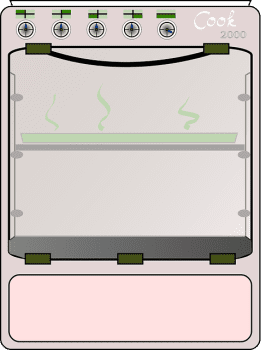
Oven drying allows you to have the benefit of heat drying without having to have a dehydrator. You can’t dehydrate as much food, and you do have to keep an eye on it more closely to regulate temperatures and rotate trays. But if buying another appliance isn’t an option for you, dehydrating in the oven works well. In fact, some experts believe that oven dehydrating jerky in the oven is safer than in a dehydrator.
Air Drying
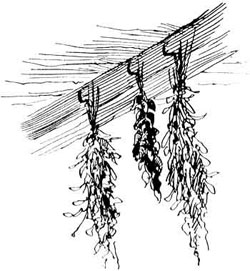
Air Drying has been a traditional method of dehydrating herbs and flowers for thousands of years.The simple act of tying a bundle, and hanging it from a well ventilated space allows the foods to natural dry from air circulation and pulling out the moisture. This doesn’t work well in high humidity climates, but can be worked around. If you prefer, put a loosely tied paper bag around your bundles to keep dust and insects off. This is also a great way to do smaller bundles of herbs when you don’t want to tie your conventional dehydrator up.
Microwave Drying
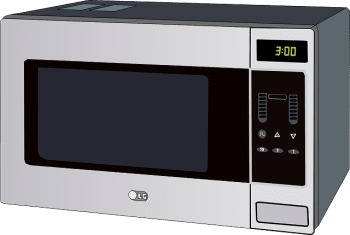
Yes, really, you can ‘dehydrate’ with a microwave. Layering foods in wax paper and ‘cooking’ them for long periods of time draws the moisture out in a microwave. But you’re looking at a lot of time spent with it checking on the food, etc. And then, if you want it crispy the way most dehydrated food tends to be, you still need to put it in a conventional oven. Is my bias showing here? Yes. But if you have no other options, it is a method that you can master to make the most of your food storage.
YOUR THOUGHTS? What method are you interested in using or what do you already use?
Need some Dehydrator Recipes?
Supplies you might need:
Click the image to Pin to your Dehydrating or Food Storage Pinterest Board.
Katy Willis is a writer, lifelong homesteader, and master herbalist, master gardener, and canine nutritionist. Katy is a preparedness expert and modern homesteader practicing everyday preparedness, sustainability, and a holistic lifestyle.
She knows how important it is to be prepared for whatever life throws at you, because you just never know what's coming. And preparedness helps you give your family the best chance to thrive in any situation.
Katy is passionate about living naturally, growing food, keeping livestock, foraging, and making and using herbal remedies. Katy is an experienced herbalist and a member of the CMA (Complementary Medical Association).
Her preparedness skills go beyond just being "ready", she's ready to survive the initial disaster, and thrive afterward, too. She grows 100% organic food on roughly 15 acres and raises goats, chickens, and ducks. She also lovingly tends her orchard, where she grows many different fruit trees. And, because she likes to know exactly what she's feeding her family, she's a seasoned from-scratch cook and gluten-free baker.
Katy teaches foraging and environmental education classes, too, including self-sufficient living, modern homesteading, seed saving, and organic vegetable gardening.
Katy helps others learn forgotten skills, including basic survival skills and self-reliance.
She's been published on sites such as MSN, Angi, Home Advisor, Family Handyman, Wealth of Geeks, Readers Digest, and more.






